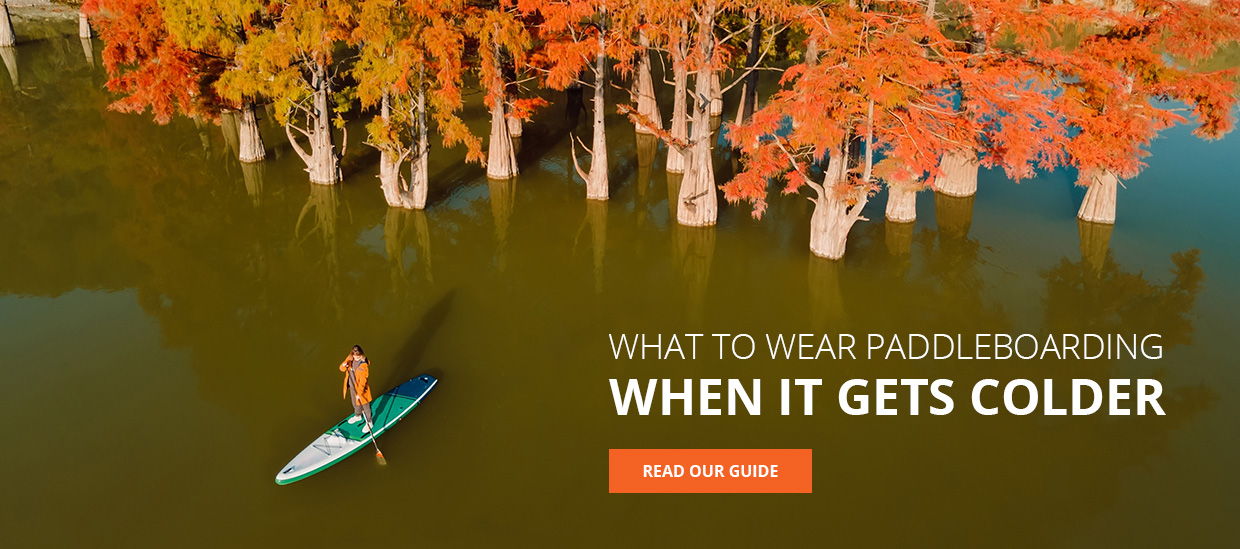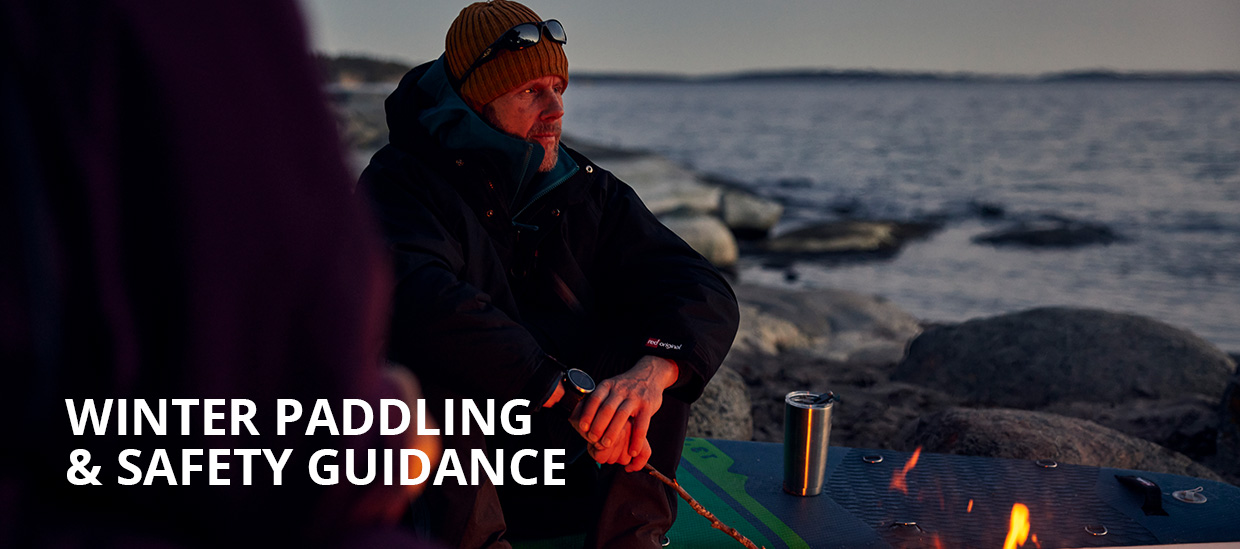
So you have bought a paddleboard this summer and loved it so much that you don’t want to stop through the colder months. Read on for 'How to keep paddling through Autumn and Winter'.
How to keep Paddleboarding when it gets colder?
The first question to ask yourself is… is your paddleboard any good? If you’re still saying things like ‘I Love paddleboarding but I’m still learning to stand up’ then the answer is probably… NO! Your paddleboard isn’t really winter-ready. Why? Ideally when paddleboarding through the winter you will have a board that’s stiff enough to make falling off very unlikely. So, if you are falling off but want to paddle through the winter it might be time for an upgrade before the cold really sets in. Boards with premium construction are much stiffer than the cheap n’ cheerful boards on the market so a good quality board is a must.
Once you have decided whether your board is up for the job, its now time to check your kit. Paddling in a bikini and board shorts in the heat of the summer is perfect, but once it starts to get a bit cold, wearing the right gear is important! both, to keep you warm whilst paddling and as a precaution should you fall in. Read our guide on ‘what to wear paddleboarding in the cold’, which also includes some top tips on safety too.
Winter Paddling and Safety Guidance
Autumn and winter can be a beautiful time to paddle, but colder water and weather does need a different kind of planning and understanding of the elements. Here are out top 10 tips for cold weather paddling.
Plan for the weather
The key factor to check when paddling in any season is wind, but this definitely becomes a more critical factor in the cold. Download a 'wind app' to make your life easier; pop 'wind app' into your search engine and there is quite a few to choose from. This will allow you to track the wind, rather than the weather and how sunny or rainy it is, a couple of days before going out. Checking the wind is especially helpful if you don’t mind getting in the car to a destination, as knowing what the wind is doing will allow you to choose your destination rather than getting somewhere and being disappointed that you can’t go out as it’s too windy. The second thing to check is tides or water flow. If paddling on a river this is a particularly useful page - https://check-for-flooding.service.gov.uk/river-and-sea-levels - and if you're paddling on the sea, a local tide table will also be particularly useful, as an example pop '{your search area} tide table' into your search engine and the local tide table will pop up.
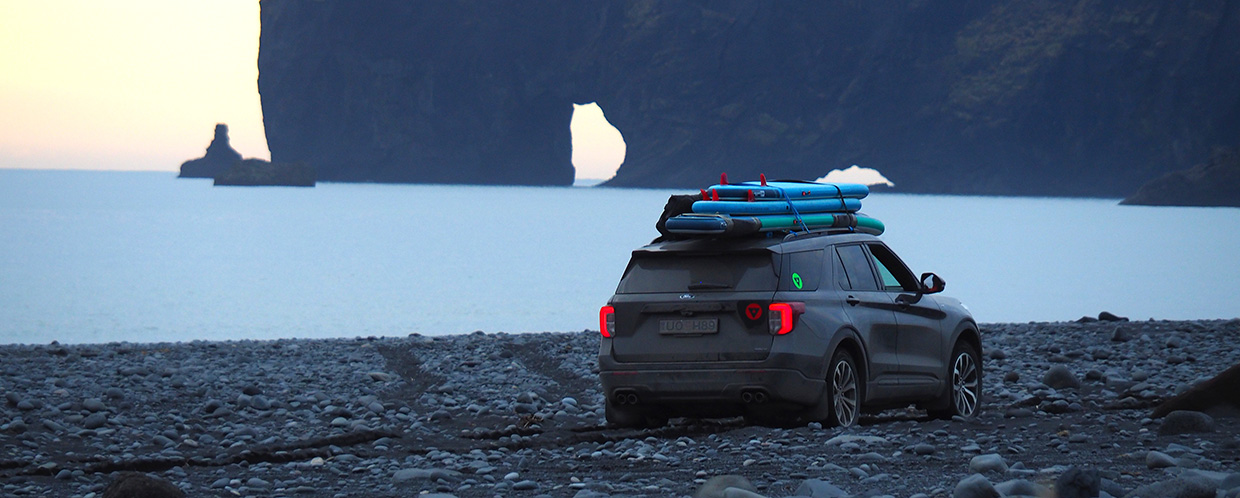
Plan your trip
If you plan your trip and where you’re going to go paddleboarding, you’re more likely to be prepared for the conditions you face. Being prepared makes life a whole lot easier, both on and off the water!
a. Where you paddle - Different waterways need a different kit and consideration, for example, sea and river and large lakes require different considerations to perhaps a trail on the canals as rivers, lakes and sea will likely have more wind and water flow and tidal issues.
b. How far are you going? A one hour session needs a lot less organisation than a day on the water. We always think it’s a good idea to paddle with a warm drink and spare food but the longer you’re out and the further away you get from your extra stuff, that's maybe in the car, the more spares, including clothing and paddle maintenance you will need.
c. It's always a good idea to paddle with friends or a group and whether you are in a group or paddling on your own to let people know you’re out on the water. We use a ‘find my friends’ app tracker and it’s especially useful when enjoying the water.
It gets cold in the UK so be prepared!
We know! Its sounds really obvious so don’t roll your eyes whilst reading this but please dress for the weather. There’s nothing like the winter sun on your back whilst paddleboarding but if you fall in the water can be really really cold, so prepare for the wet and cold even if you haven’t fallen in for ages. The right clothes are 100% vital to paddleboarding when it's cold and the right kit and spare change of clothes are as important to checking your board, paddle and spares kit.
We suggest wearing really good quality clothes that have specifically designed for paddle boarding. Either premium longjohns and jackets with thermal tops or a SUP specific drysuit or jackets and cags. Check out our what to wear paddleboarding when it gets colder info guide.
We suggest having the following in a drybag:
- Warm and dry spare clothes
- Hat/Buffs/Neck Warmer
- Warm Drink
- Food
- Spares for paddle maintenance
- Spare fin
- And a get-home-paddle between a group of friends
Always take more clothes rather than less - It’s better to be over warm than too cold.
Paddling in a group
Paddling in a group is great fun and gives a little bit of peer-to-peer safety, it means you can share the safety kit, spare paddles etc and if you do fall in then there is a friend to help you get out of your wet clothes and get you a nice warm drink. If you do love the solitude of a paddle by yourself, spare clothes, a ‘get home’ paddle and telling someone where you are is pretty key.
Buoyancy aid and PFD’s
There are some great options for safety equipment arriving on the market which means paddleboarding can be safe, and comfortable. If you find a buoyancy aid a bit uncomfortable then PFD’s that clip round the rider’s waist will give the rider a plan B if ever needed.
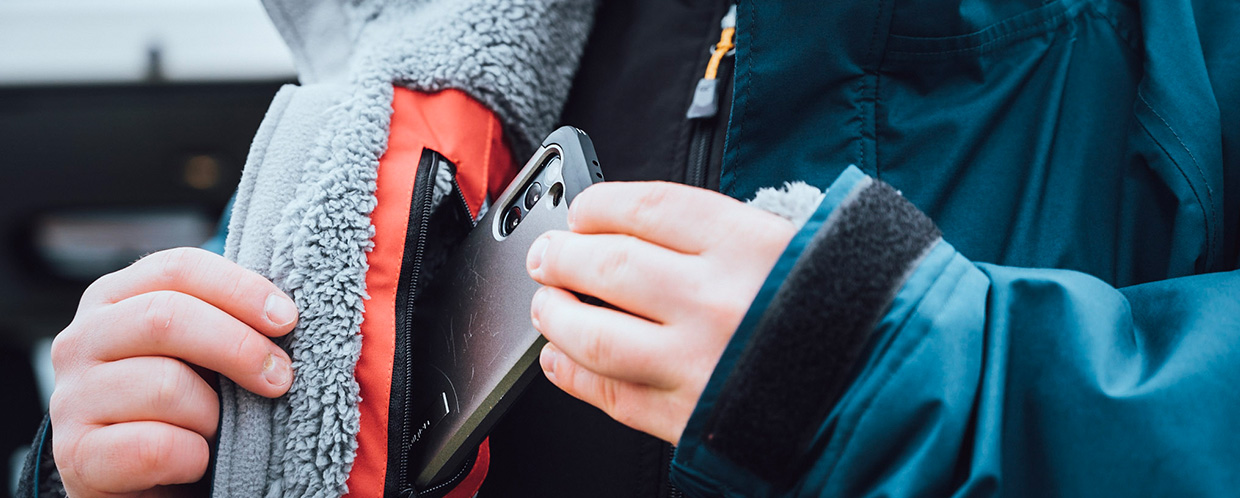
Get away from your phone (but keep it with you)
Most of us paddle to get away from the business of life so leaving your phone in the car or at home can be very tempting. If you really want to get away from it all ’safely’ store your phone in a waterproof bag in your dry bag, out of sight but still there if you need it. To be extra safe, get a ‘find my friend’ kind of app on your phone so a friend can keep an eye on your route if you haven’t called in on time.
Paddle with spare clothes
Spare clothes in a dry bag are essential and something warm to change into when you get back to the car is pretty nice too. I’ve been known to drive home in a very fetching onezie or a dry robe or changing robe is equally handy.
Pack food!
Again, this will depend on the type of session you have planned. If you’re only going to be on the water for an hour, perhaps a hot drink in a flask will suffice. If however, you’ve got an epic challenge ahead of you, you need to think more carefully about the food and drink you pack. Flasks, energy bars and gels, meals and snacks all need to be considered. Staying fed and watered can help you stay warmer for longer.
Stay Hydrated
You might be surrounded by water, but you need to drink plenty of it too! Even though it’s not Mediterranean temperatures outside, your body will still lose water during exercise so it’s important to take enough water for your session. Consider a hydration pack so you can drink on the move.
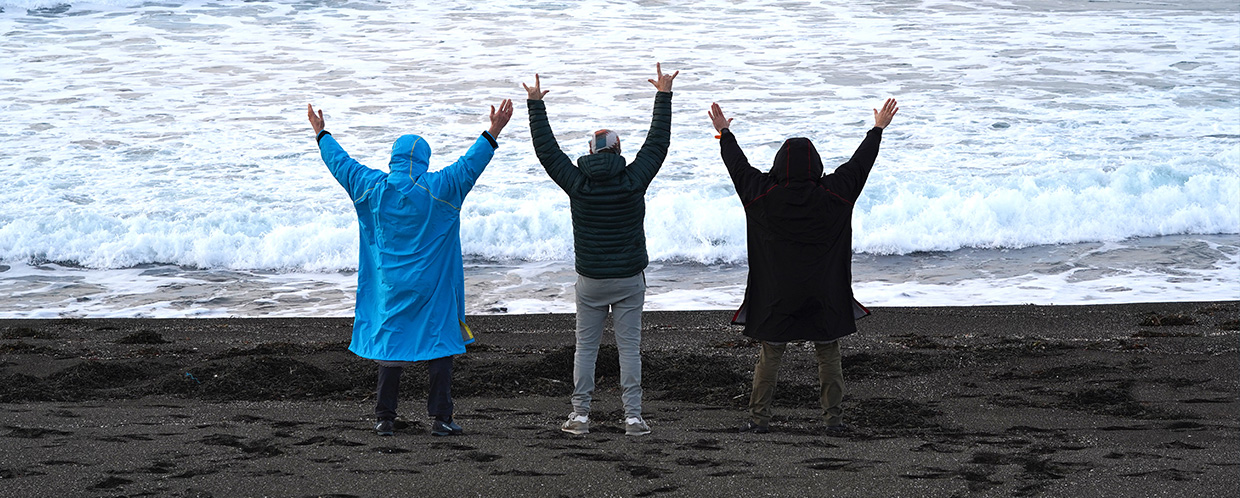
Enjoy your paddling!
Enjoy your paddling! The most important point of all… enjoy your paddling through winter! There are so many ways you can mix up your winter paddling and try something new, for example, try new wind-free routes, find social paddles and events or join a club.
We have scoured the internet for the best SUP safety and our favorite is the newly released SUPboarder 'SUP SAFE' which has some really comprehensive advice in these videos.
